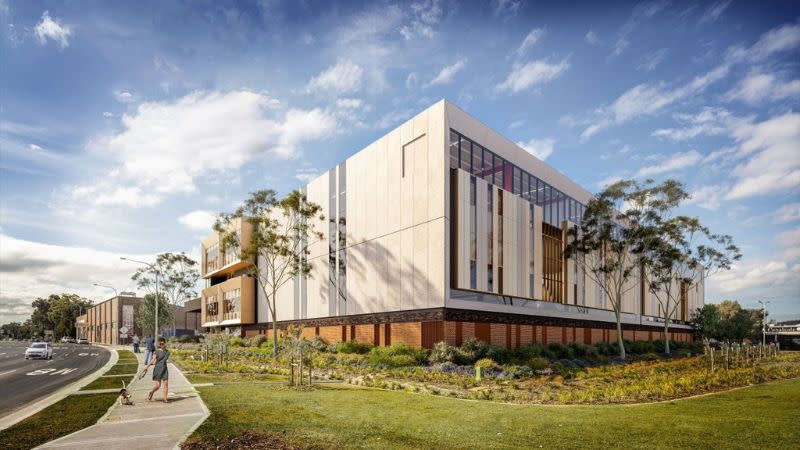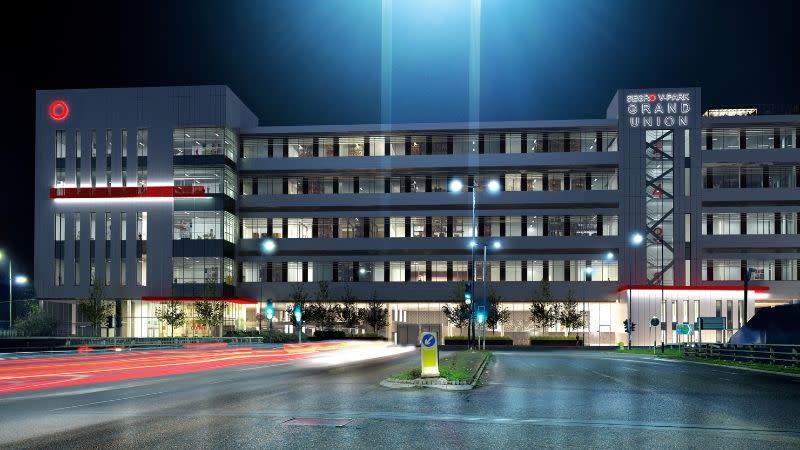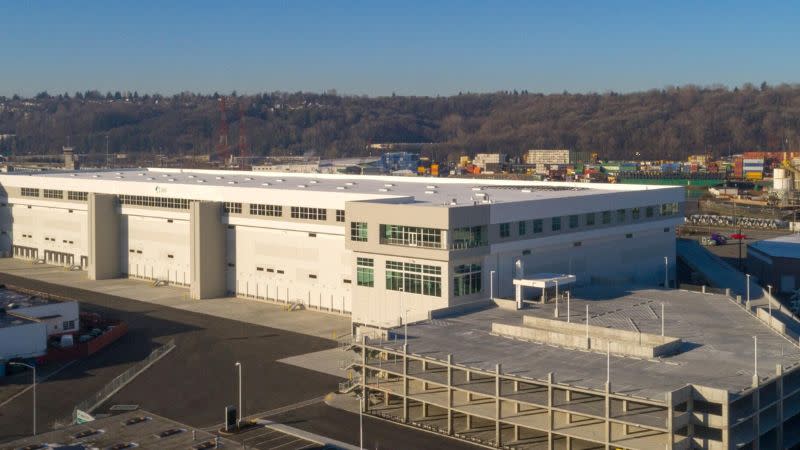
The buzz around multi-storey warehousing is beginning to result in completions in south Sydney, but stakeholders say that the new model is unlikely to spread and is not a solution to the world’s tightest warehouse market.
Interest and noise around multi-storey industrial facilities, touted as a solution to shortages of urban infill locations suitable for last-mile logistics, has been growing in recent years.
Goodman and Charter Hall are among early movers in this space, while single-user e-commerce and delivery companies such as Woolworths and Amazon also see vertical as a viable play.
“Given that there’s no industrial-zoned land in south Sydney to develop on, the case for going vertical absolutely makes sense,” CBRE head of industrial and logistics research Sass J-Baleh tells The Urban Developer.
South Sydney now hosts a number of projects close to standing up, and industry players say that the south, south-west and western metro precincts will likely have several more in coming years.
ESR Australia has just settled on one of the few remaining large-scale industrial landholdings in Botany Bay, acquiring a 4.8ha site at 49 Stephen Road, Banksmeadow, for $143 million.
ESR will invest a further $300 million to develop a two-level facility with a GFA of about 58,000 square metres.
South Sydney may have embraced multi-storey, and the model has been proven out internationally, but tall sheds are unlikely to work for urban infill elsewhere in Australia, industry says.

Centennial chief executive industrial and logistics Paul Ford says “the only other main supply that hasn’t yet come on in the inner-rings is multi-storey warehousing”.
“Multi-storey absolutely has merit and a place, however, it isn’t currently economical in many locations except for south Sydney.”
J-Baleh says that urban infill multi-storey industrial requires density and access to other logistics precincts to make sense. In Australia, land around the Port of Melbourne might be the only other viable area.
“In the next 10 years we might potentially see something starting up in the Melbourne market. At the moment it’s not feasible but it certainly will get there in the future,” J-Baleh says.
With Australia boasting the tightest industrial and logistics markets in the world, developers and tenants are desperate for solutions.
“Industrial’s been on a hell of a journey, the last five years or so. We’ve seen vacancy rates drop from 6 or 7 per cent down to half a per cent [nationally],” Centuria head of industrial Jesse Curtis says.
“We’ve had tenant demand increasing at a huge rate, we’ve had a massive uptake by newcomers.”
Curtis says that in addition to e-commerce, subsectors such as transport and logistics, data centres, and cold-chain storage centres were competing for urban infill sites.

Sources have told The Urban Developer that vacancies in Sydney may be as low as 0.2 per cent, with Melbourne floating around 0.5 per cent.
Surprisingly, analysts predict that the market will cramp up further in the months and years ahead.
“We don’t see demand tailing off materially in the short to medium term albeit there could be some moderate slowdown should we enter a recession … and we only see demand for industrial and logistics warehousing continuing to outpace supply,” Ford says.
“If we look at a global context, the average rents in some of the major cities around the world, Sydney’s still not even in the top 10,” J-Baleh says.
“There’s scope for further rental growth, just on that basis.”
J-Baleh says that rents will go up another 9.2 per cent by Christmas. Melbourne sheds can expect a particularly juicy year, up 14 per cent.
Expect the next few years to be scorchers too, with forecast CAGR in Melbourne of 6.8 per cent out to 2026.
That comes on top of about 37 per cent year-on-year growth already across the nation and factors in a slowing economy.

The core component of the financial case for multi-storey warehouses is land values, proponents say.
CBRE estimates that multi-storey becomes viable once land values are equivalent to 50 per cent of construction costs.
“There is no doubt supply of this product will increase over the medium to longer term in locations with high enough land values to justify it,” Ford tells The Urban Developer.
“Land values need to lift to enable that to become economic … they’re probably 70 per cent there in a number of locations but until land growth is at a level where it’s high enough, multi-storey supply will be constrained.
“When it does, it will help ease that burden but that is at least a few years away.”
Curtis says that, with the major players having plenty of experience in multi-storey in other markets, there’s no shortage of expertise when the time inevitably comes to go tall.
“These last-kilometre locations for industrial are only going to become more in demand. And they’re going to need to grow up, grow to multi-level.”
You are currently experiencing The Urban Developer Plus (TUD+), our premium membership for property professionals. Click here to learn more.
